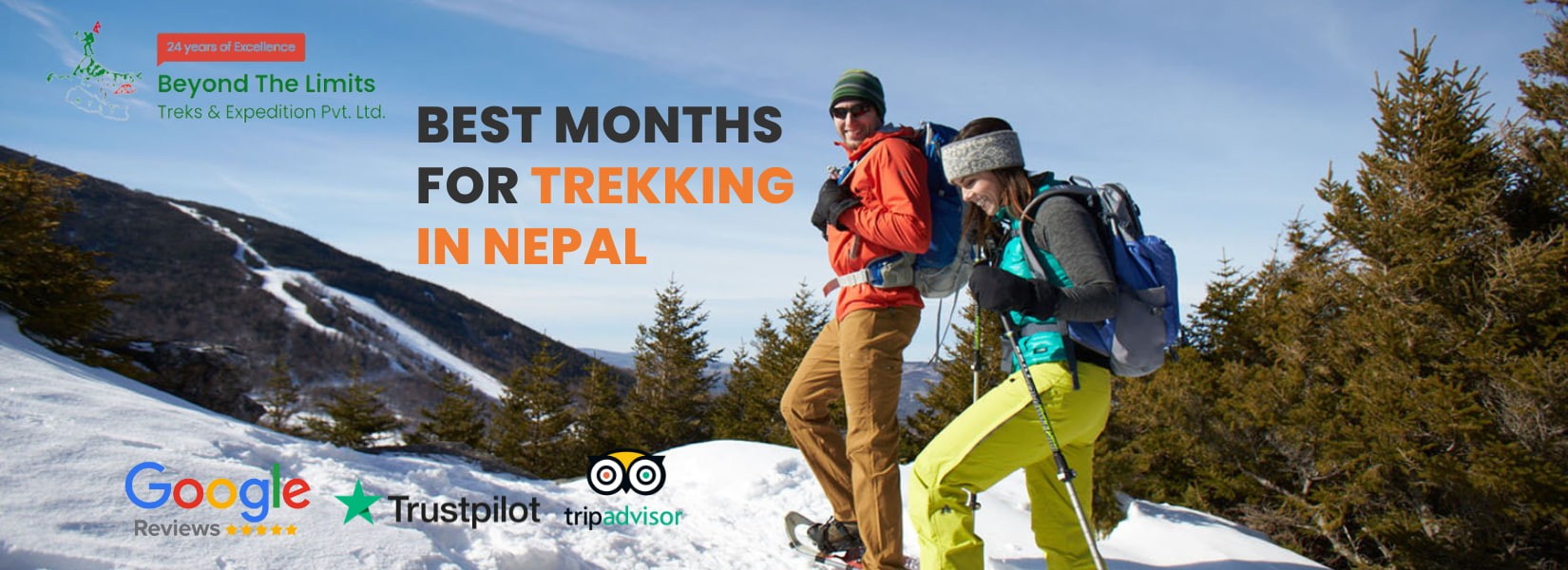Overall Weather and Climate Across Nepal
Nepal has a diverse range of climates due to its varying topography, ranging from the lowland Terai plains to the towering Himalayan peaks. The country can be broadly categorized into three main climatic zones: the tropical plains, the temperate hills, and the alpine region.
Located in the southern part of Nepal, the Terai region has a tropical climate with high temperatures and high humidity. Summers are hot, with temperatures often exceeding 40°C (104°F). The monsoon season brings heavy rainfall, contributing to lush vegetation but also leading to flooding in some areas.
The mid-hill or temperate region experiences a more moderate climate. Summers are warm, with temperatures ranging from 20°C to 30°C (68°F to 86°F). Monsoon rains also affect this region but are less intense than in the Terai. Winters can be cold, with temperatures dropping below freezing, especially at higher elevations.
The northern part of Nepal is dominated by the Himalayan mountain range, characterized by an alpine climate. Summers are mild and short-lived, with daytime temperatures ranging from 10°C to 20°C (50°F to 68°F). Winters are cold, and temperatures can drop significantly. The monsoon affects the northern slopes as well, with precipitation in the form of rain at lower elevations and snow at higher elevations.
Top 6 Trekking Packages in Nepal for 2025 Spring & Autumn:
Below we have selected the top 6 trekking packages for Nepal trekking season 2025. This is the average temperature along these trekking routes in spring and autumn:
- Daytime temperatures: 0°C to 25°C (32°F to 77°F)
- Nighttime temperatures: -10°C to 10°C (14°F to 50°F)
- Humid: Low
- Wind: Moderate
*Please note that the above temperature ranges are approximate, and actual conditions can vary. Additionally, temperatures can drop significantly at higher elevations, especially during the night.
Everest Base Camp Trek:
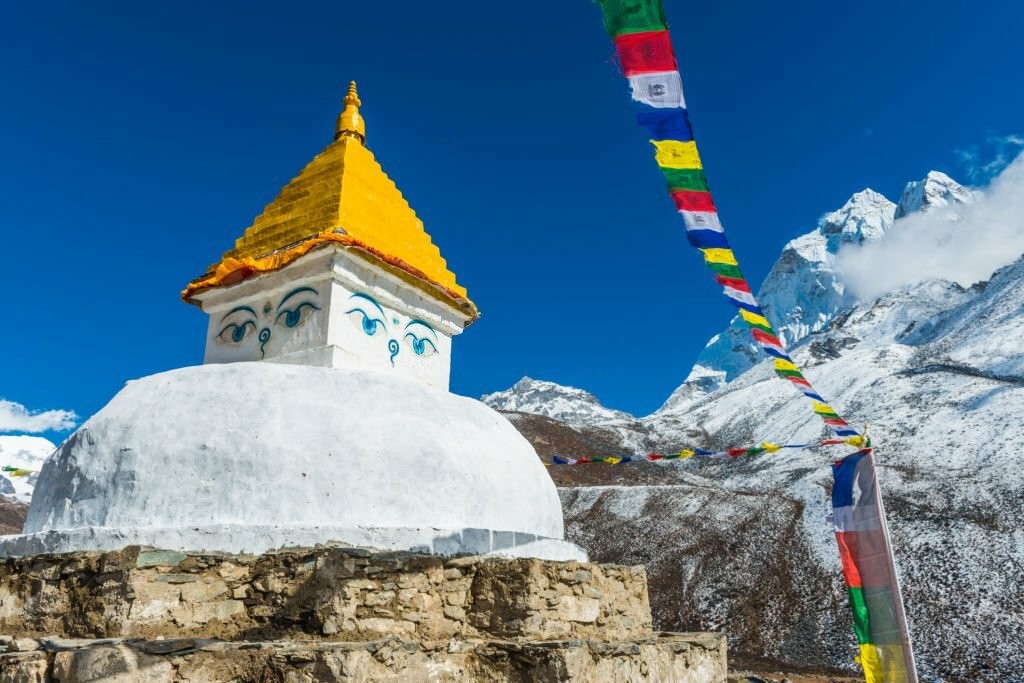
Everest Base Camp trek is an evergreen trekking package in Nepal that never goes out of trend. It is an adventurous trek in the Khumbu region of Nepal, which houses some of the tallest mountains in the world, including Everest and Lhotse. Trekking to the Everest Base Camp is an adventurous journey via Sherpa villages, lush rhododendron forests, and glacier moraines.
The Everest Base Camp trek lasts from 12 to 16 days. You can pick the itinerary of your choice from our wide range of Everest Base Camp Trek Costs & packages. Trekking to the base camp of the highest mountain in the world in spring or autumn is fantastic. The trail offers breathtaking mountain views, and the famous Lukla flight is mostly on time.
If you have some extra days in your hand, consider extending the trek to stunning Gokyo Lakes, Ama Dablam Base Camp, or the Three High Passes.

Langtang Valley Trek:
Langtang Valley Trek is a very famous and at the same time an underrated trekking route in Nepal. Moreover, it is also the closest trekking route from Kathmandu, so you can start the trek right away. Located north of Kathmandu, the Langtang Valley trek takes you to 5,122 meters (16,804 ft) from sea level. You will trek past dense forests and settlements of Tamangs and Sherpas.
The Langtang Valley trek route starts from Syabrubesi. You can reach here by taking an 8 to 9-hour ride from Kathmandu. The trail is tranquil, and you may come across wildlife like langur monkeys on the way. Cross suspension bridges and walk past many stupas, chortens, and maniwalls on the way.
During the peak trekking seasons, you will meet many local and foreign travelers but still lower in numbers than other famous trekking routes in Nepal. If you have a few extra days, you can extend the trek to Gosaikunda Lake or Helambu region, crossing Laurebina Pass.
Annapurna Base Camp Trek:
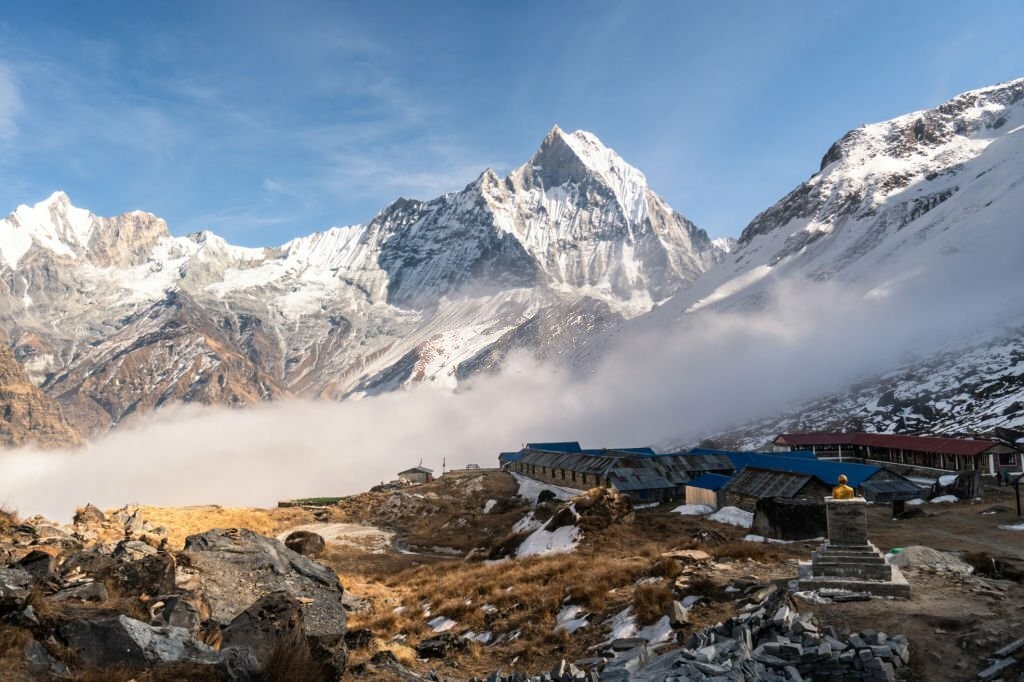
If you are planning to trek in the Himalayas, you might have heard about the oh-so-popular Annapurna Base Camp trek. The Annapurna Base Camp trek lasts from 6 to 13 days. This trek is more like an adventurous multiple hiking venture via lush forests as the trail is well maintained and dotted with lodges offering comfortable overnight stays to travelers.
In the spring and autumn seasons, the Annapurna Base Camp trail is quite bustling. If you love meeting new people or in general, the vibrant surroundings, then you should do the Annapurna Base Camp trek between March to May or September to November. The trek offers stunning mountain views of Annapurna, Dhaulagiri, Fishtail, Nilgiri, Hiunchuli, etc.
Khopra Danda Trek:
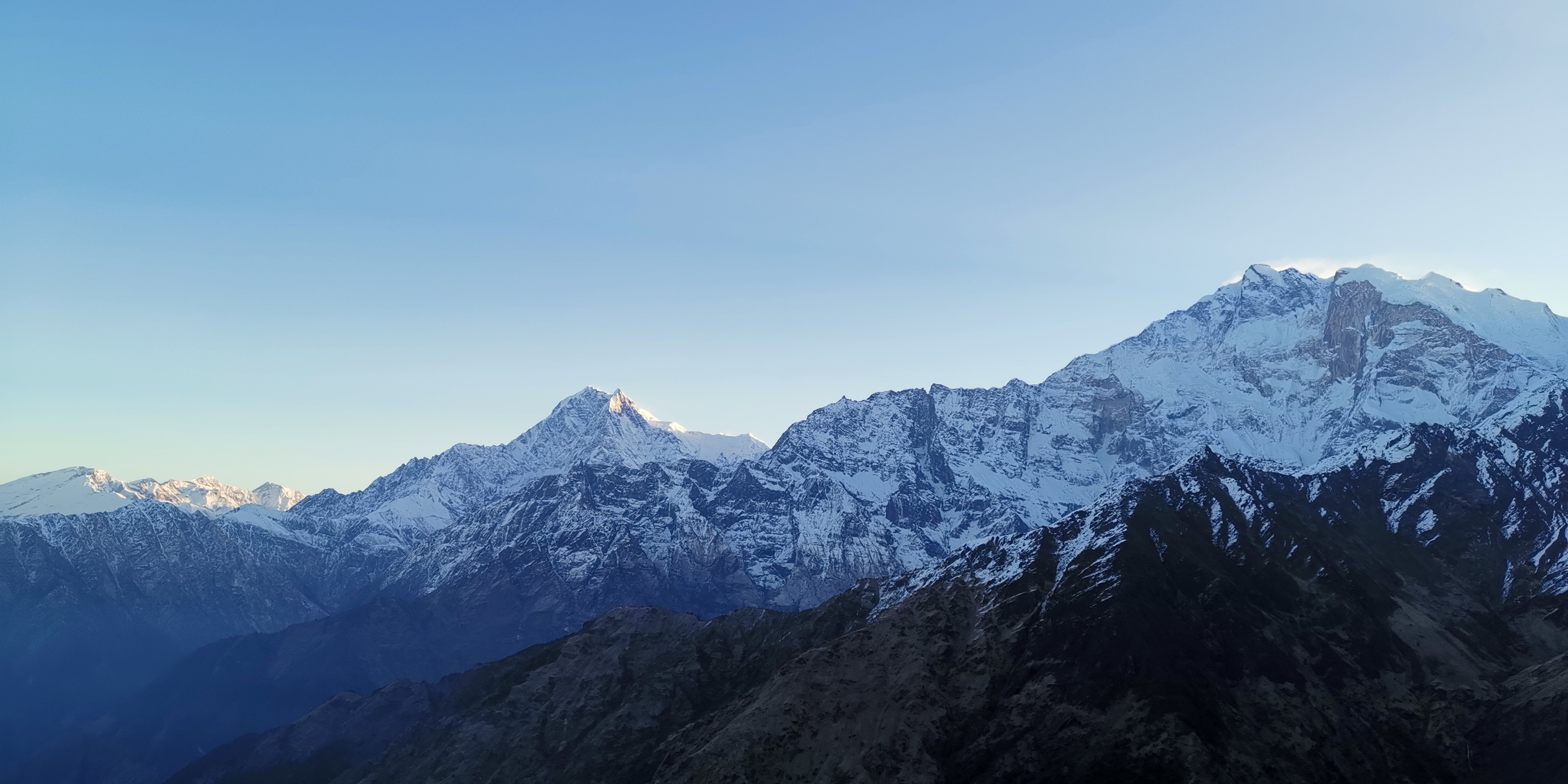
Khopra Danda is a beginner-friendly trek and a fantastic alternative to the very famous Poon Hill trek and Mardi Himal trek in the Annapurna region. The Khopra Danda trek is an 11-day journey and leads you to the holy Khayer Lake at 4,660 meters (15,289 ft). This is like a new trekking route that was recently made to support the local community along the trail.
Khopra Danda trek is also like a community trek. It offers close and meaningful interactions with the locals residing along the trail. The trekking route is not crowded at all and goes through peaceful forests and uneven cliffsides. Likewise, the mountain views are phenomenal and unlike any other trekking route in the Annapurna region.
Trekking to Khopra Danda in spring and autumn allows you to witness the picture-perfect beauty of nature. Leaving the crowded mainstream trekking routes in Nepal embark on a tranquil and beautiful journey!
Annapurna Circuit with Tilicho Lake Trek:
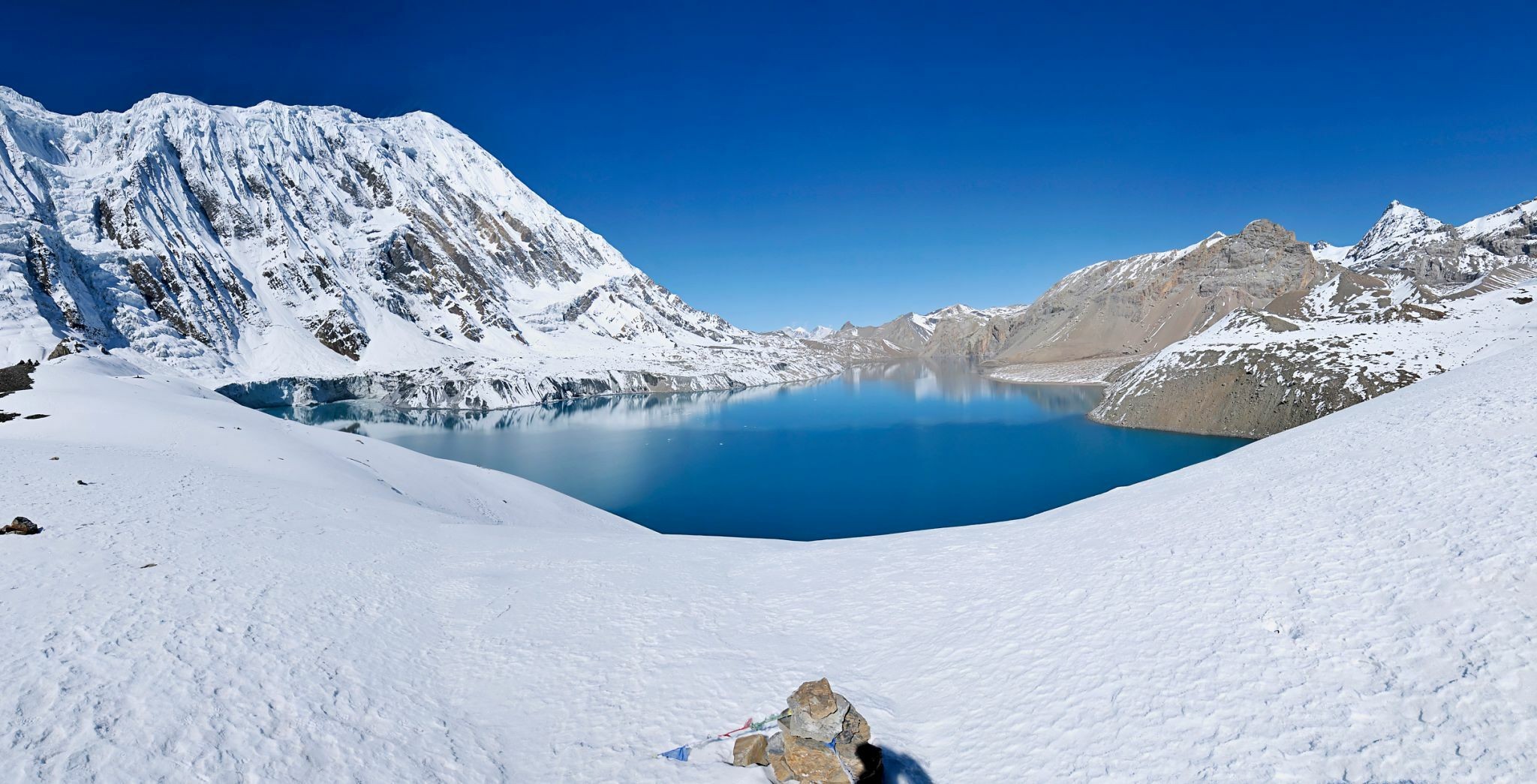
Annapurna Circuit is one of the famous trekking routes in Nepal, and combining it with Tilicho Lake makes the journey more exhilarating. It is a 14 days adventurous trek in the beautiful Annapurna region. Starting the trek from Chame, you will pass by dense rhododendron, pine, and bamboo forests. Spend the nights in various lovely mountain villages on the way.
The route to Tilicho Lake is quite difficult and involves walking on glacier and snow-covered paths. Situated at 4,919 meters (16,138 ft), Tilicho Lake is the second-highest lake in the world and is known for its serenity and beauty. From here, you will follow the high trail to the Thorong La pass (5,416 m/17,769 ft) and descend to Muktinath Temple, a significant pilgrimage site in Nepal.
In the spring and autumn seasons, the Annapurna circuit and Tilicho Lake trails are in their best condition. Moreover, trekking to Tilicho is summer/monsoon and winter is almost impossible because of very bad trail conditions.
Manaslu Circuit Trek:
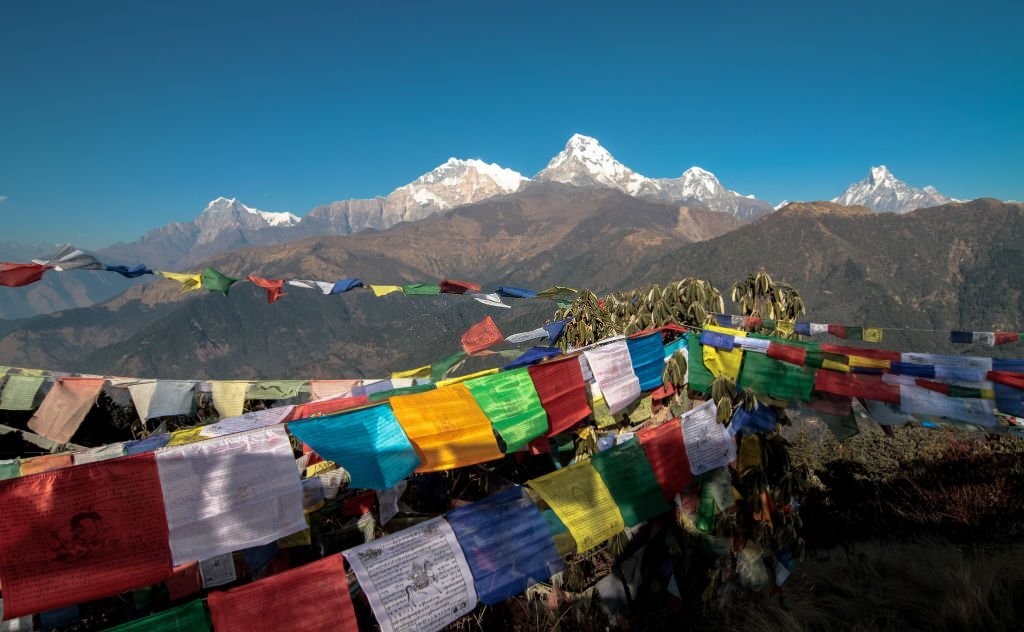
Manaslu Circuit Trek is a challenging trek in the Himalayas. This trek best suits individuals who have previous trekking experience. It is an offbeat trek with many steep ascends and descends. The trail begins from sub-tropical forests and climbs to the base of the highest mountain in the world, Manaslu Base Camp.
The main highlight of the Manaslu Circuit trek is the Larkya La pass (5,106 m/16,752 ft). It is the highest point of this trek, and crossing it is quite challenging. During the journey, you will explore the lifestyle and traditions of different mountain communities. Visit ancient temples and navigate via landslide debris and glaciers.
The Manaslu Circuit trek in spring and autumn is wonderful because of the favorable weather conditions and clear mountain vistas. To make the journey more exciting, you can extend the itinerary to the hidden Tsum Valley or combine the Lumba Sumba Pass.
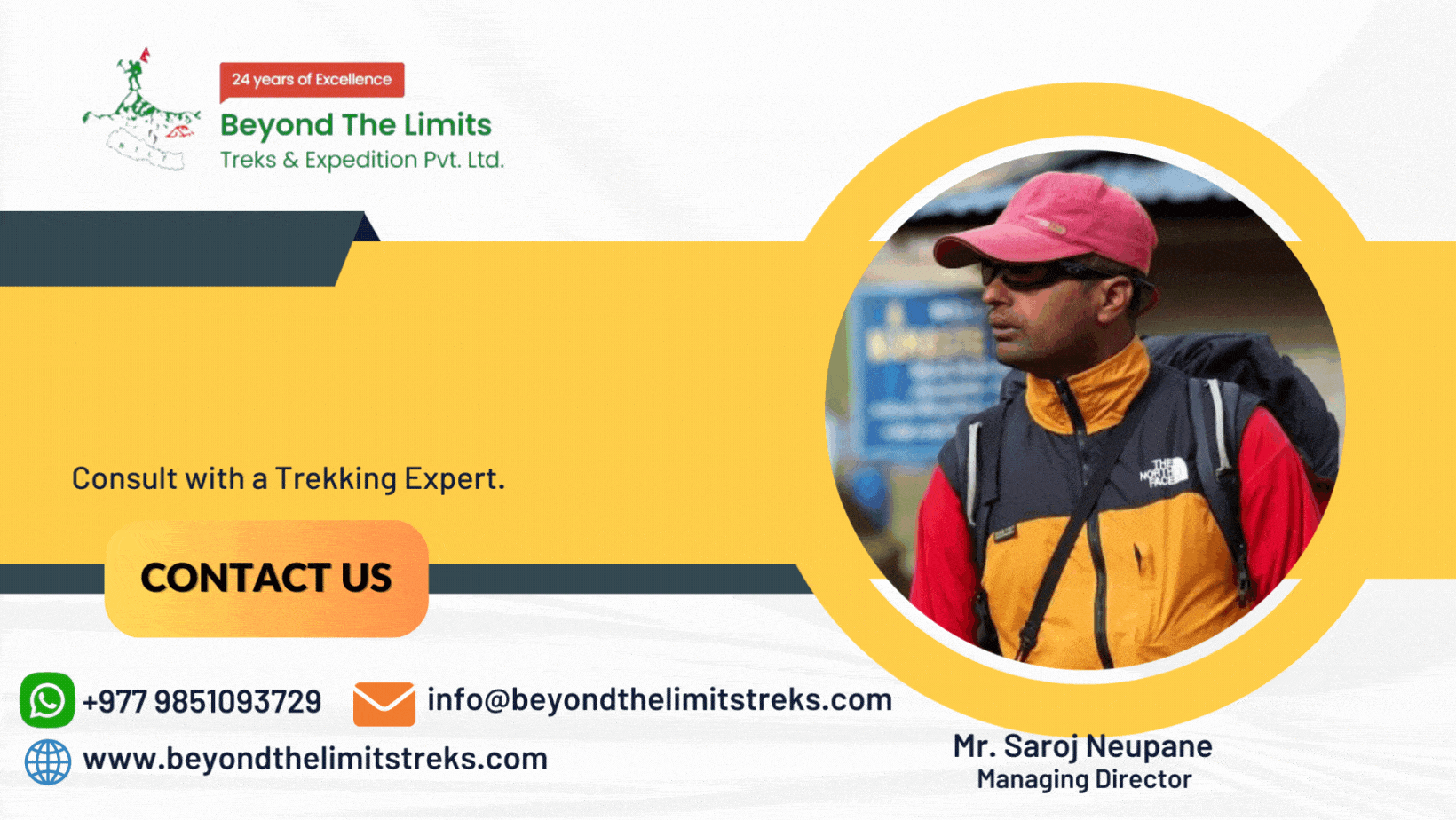
Benefits of Trekking in Nepal During Peak Trekking Seasons and Off-Seasons:
✔ Below are the benefits of trekking in the Himalayas during the peak trekking seasons- spring and autumn. Peak seasons are the best time to trek in Nepal.
- Peak trekking seasons in Nepal provide the most favorable weather conditions. Mild temperatures, clear skies, and stable weather make trekking enjoyable.
- The clear skies offer unparalleled views of the majestic Himalayan landscapes. Lush greenery, blooming rhododendron forests, and vibrant landscapes contribute to a visually stunning trekking experience.
- Peak trekking seasons often coincide with various cultural festivals in Nepal. Trekking during festivals provides a unique opportunity to witness and participate in local celebrations, offering insights into the rich cultural richness of the region.
- Popular trekking regions in Nepal have a network of tea houses along the trails. During peak seasons, these teahouses are well-equipped and provide comfortable accommodations and meals, ensuring a smoother trekking experience.
- The trekking paths are well-maintained and accessible during peak seasons. Trekking in optimal conditions allows for a more enjoyable and safer journey.
- Peak trekking seasons attract a diverse group of trekkers from around the world. This creates a social atmosphere, providing opportunities to meet like-minded individuals and share experiences along the trekking routes.
- Spring, in particular, brings the hillsides to life with colorful blossoms, including the national flower of Nepal, the rhododendron.
- The crisp, clear air and minimal cloud cover during these seasons provide trekkers with uninterrupted and breathtaking panoramic views.
- Local markets in towns and villages along the trekking routes are more vibrant and bustling during peak seasons. You get to purchase traditional handicrafts and support the livelihoods of the communities as you pass through.
While peak trekking seasons in Nepal offer many advantages, trekking during the off-seasons- summer/monsoon and winter also has its unique benefits.
✔ Below are some reasons why trekking in Nepal during the off-seasons (summer and winter) can be appealing as well:
- Off-seasons, such as summer (monsoon) and winter, experience fewer trekkers on the trails. Trekkers can have a more peaceful and secluded experience that allows for a deeper connection with nature and a sense of tranquility.
- Accommodation prices, permits, and other trekking expenses are lower during the off-season. Trekkers on a budget can take advantage of discounted rates and potentially negotiate better deals on services.
- Trekking during the off-seasons provides a different perspective of the landscape. In summer, the monsoon brings lush greenery and blooming flowers, while winter offers a snow-covered wonderland in higher altitudes.
- During off-seasons, local communities may have more time to engage with trekkers as there are fewer visitors. This can lead to more meaningful cultural exchanges and interactions with the locals.
- Some wildlife species are more active during the off-season, especially in summer when the monsoon brings out various creatures. You may get a chance to spot unique wildlife in a less crowded environment.
- Off-season trekking is like a blessing in disguise for adventure enthusiasts. As it presents its own set of challenges, such as navigating wet and slippery trails in summer or dealing with cold temperatures in winter, there is an extra layer of excitement to the journey.
- The unique lighting conditions and weather patterns during off-seasons can result in stunning and unconventional photography. Misty landscapes, snow-covered trails, or vibrant greenery in the monsoon can offer distinct visual experiences.
- Trekking during off-seasons can contribute to local economies that are less reliant on tourism during these periods. You will be supporting the local businesses during slower months.
- With fewer visitors, trekkers may receive more personalized attention from guides, teahouse owners, and other service providers. This leads to a more intimate experience.
Most Asked Questions on Trekking Months in Nepal:
1) Which is the best month to visit Nepal?
The best month to visit Nepal depends on the activity you choose to do. If you are coming to Nepal to explore cities, temples, and monasteries, you can visit any time of the year. Likewise, if you are planning to do a trek in Nepal, consider months like March, April, May, September, October, and November. You can also trek in June, July, and August in Dolpo and Mustang regions.
2) Is July good for trekking in Nepal?
July is the summer/monsoon month in Nepal, and during monsoon, most of the trekking routes are affected by heavy rainfall. You can trek, but the challenges will be very high. Check out the Upper Dolpo trek and Upper Mustang trek packages if you wish to do the trek in July. These two trekking routes are rain shadow areas, so do not see rainfall.
3) Is August a good time to trek in Nepal?
Like July, August is also summer/monsoon month in Nepal. You can trek, but then again, the difficulties will be very high, and the mountain views will be obstructed.
4) Which season is best for the Annapurna Circuit trek?
Spring and autumn are best for the Annapurna circuit trek. These two seasons have perfect weather conditions to trek, and enjoy breathtaking mountain panoramas along the Annapurna circuit.
5) Which month is best for the Annapurna base camp?
The best months for the Annapurna Base Camp trek are March, April, May, September, October, and November. These are pre and post-monsoon months, which have a moderate climate, stable weather, and overall great trekking conditions.
6) Can I do the Everest Base Camp trek in winter?
Yes, you can do the Everest Base Camp trek in the winter season, but do note that the cold will be extreme, and you may also have to walk on snow-covered tracks. December and late February are better than January to mid-February.
7) I can only travel in the summer/monsoon season; is there any trekking option in this season?
Yes, there are two perfect trekking options to do in summer/monsoon seasons. Check out these packages- Upper Mustang trek and Upper Dolpo trek. Likewise, if you do not mind mud and leeches, you can also trek to Poon Hill and Langtang Valley.
8) What is the weather and climate like in the Himalayas?
The weather and climate in the Himalayas are generally very unpredictable. Even in the peak trekking seasons, the weather can change at any time at high elevations, so trekkers are always recommended to be ready to face any type of weather while traveling in the Himalayas.
9) Is trekking in the Himalayas cold?
Yes, the Himalayas are cold year-round, especially at night and morning. You have to wear breathable yet moisture-wrecking and wind-stopper kind of clothes during trekking. However, the cold will be bearable during peak trekking seasons- spring and autumn.
10) What are the other trekking options to escape crowded, famous trails in the spring and autumn seasons?
These are some trekking packages that you can consider to escape crowded famous trails in the spring and autumn seasons- Khopra Danda trek, Gokyo Lakes trek, Manaslu circuit trek, Panch Pokhari trek, and Pikey Peak trek.
11) Is the cost of accommodation and meals low during the off-season?
Yes, the cost of accommodations and meals is low during the off-trekking seasons. During the off-seasons- summer/monsoon and winter, the trails are almost empty, resulting in cheaper accommodations and meals.
12) Do you organize treks in the off-season?
Yes, we, Beyond The Limits Treks, organize treks in the off-season. To do a trek in the off-season, talk to us and customize your trip.
Popular Trekking Packages:
